Glacier Adventure In Peru
Lifestyle story for an outdoor clothing brand at 15k ft
High Elevation in the Andes Mountains
It was 3am when our alarm pierced the cold, dark calm. We were snug and bundled in sleeping bags, our orange tent sheltered by a small grass covered platform that was open on one side. I hit the off button and saw the night temp was a brisk 19F (-7C).
The world around was was eerily silent as I unzipped the tent and peered into the darkness, my breath visible in the waning moon light. A shot of adrenaline electrified the senses as a ringing crack thundered from the far above. It sounded as if the earth itself had been snapped in two by some angry giant. The shock wave froze me in place as I listened to the deep fracture reverberate across the canyons below. I’d learn later that this was the sound of thousands of tons of glacial ice breaking.
A thin veil of snow covered the ground. The sky was clear. Thousands of stars crowded the night sky as we packed and readied for the climb ahead on our fourth day of the trek: an additional 2,000 feet in elevation gain scrambling up the side of a mountain in total darkness. With a little luck we’d arrive at the high point of our trek, Abra Warmisaya pass (16,300ft / 5000m) by sunrise.
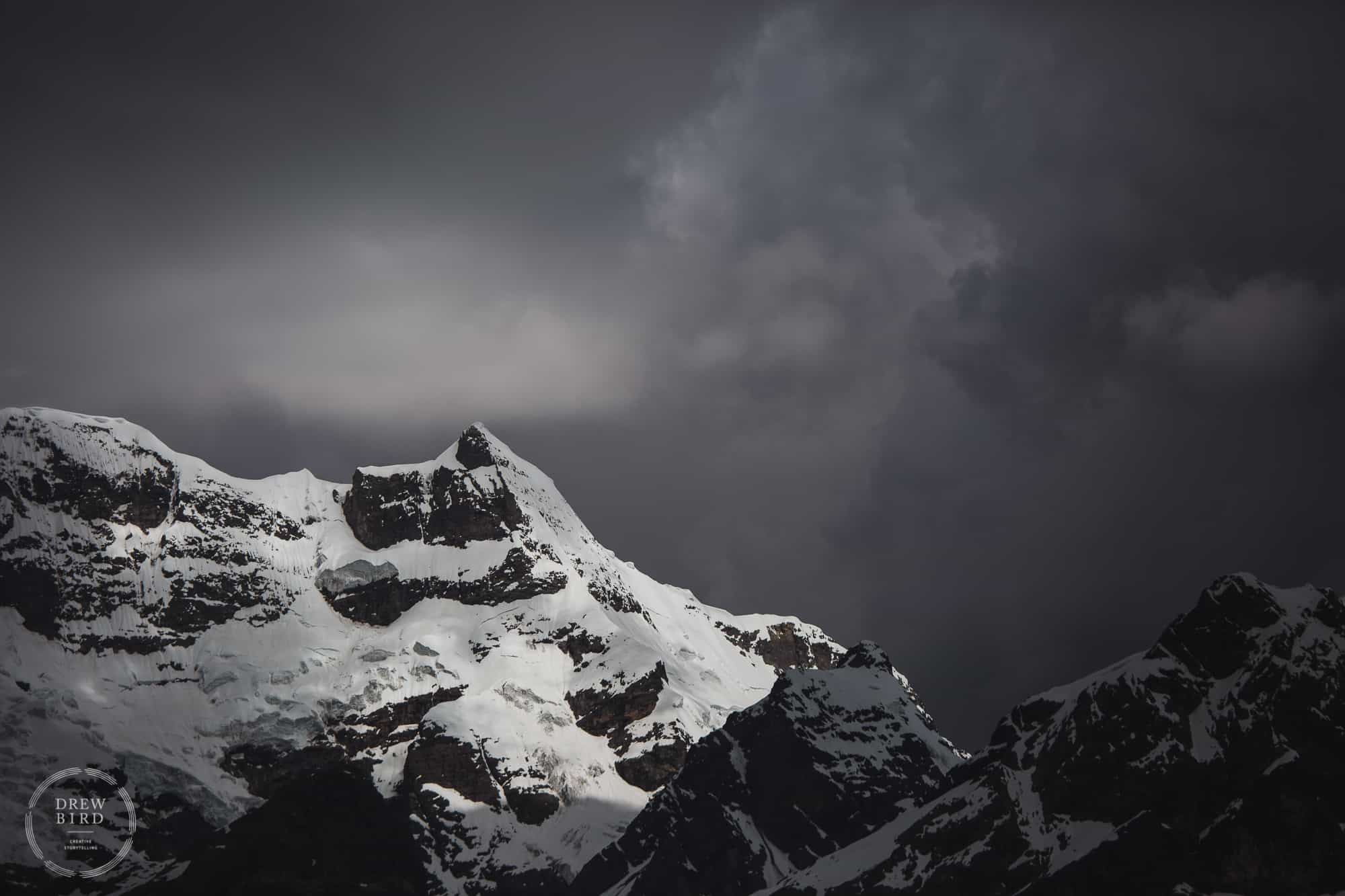
The Sacred Ausangate Glacier
Ausangate is a massive glacial mountain in the Vilcanota range of southeast Peru. Towering to 20,945ft (6,384m), it is the highest peak in Peru and one of the tallest mountains in South America. Considered a sacred mountain (“apu”) by the indigenous Quechua, they believed the mountain to be a shepherd like God that tended to the animals and people who lived on and around Ausangate. It is the world’s larges remaining tropical glacier.
Our trip had three major goals. The first was to bear witness to the effects of the climate emergency in the region: glacier retreat and ice loss, changes in water flows and availability, and adaptations being made by the plants, animals, and people who call this place home. The second was to push ourselves beyond our comfort zone by doing a week long trek at really, really high elevation and to create photo story about our experience.
The adventure was made in partnership with Ridge Merino, an incredible and earth conscious outdoor clothing brand making top level merino wool clothing for both everyday life and for the wildest of outdoor adventures. The third goal was to test out Ridge Merino’s clothing in some extreme conditions and to create some lifestyle photography images to support their branding and marketing.
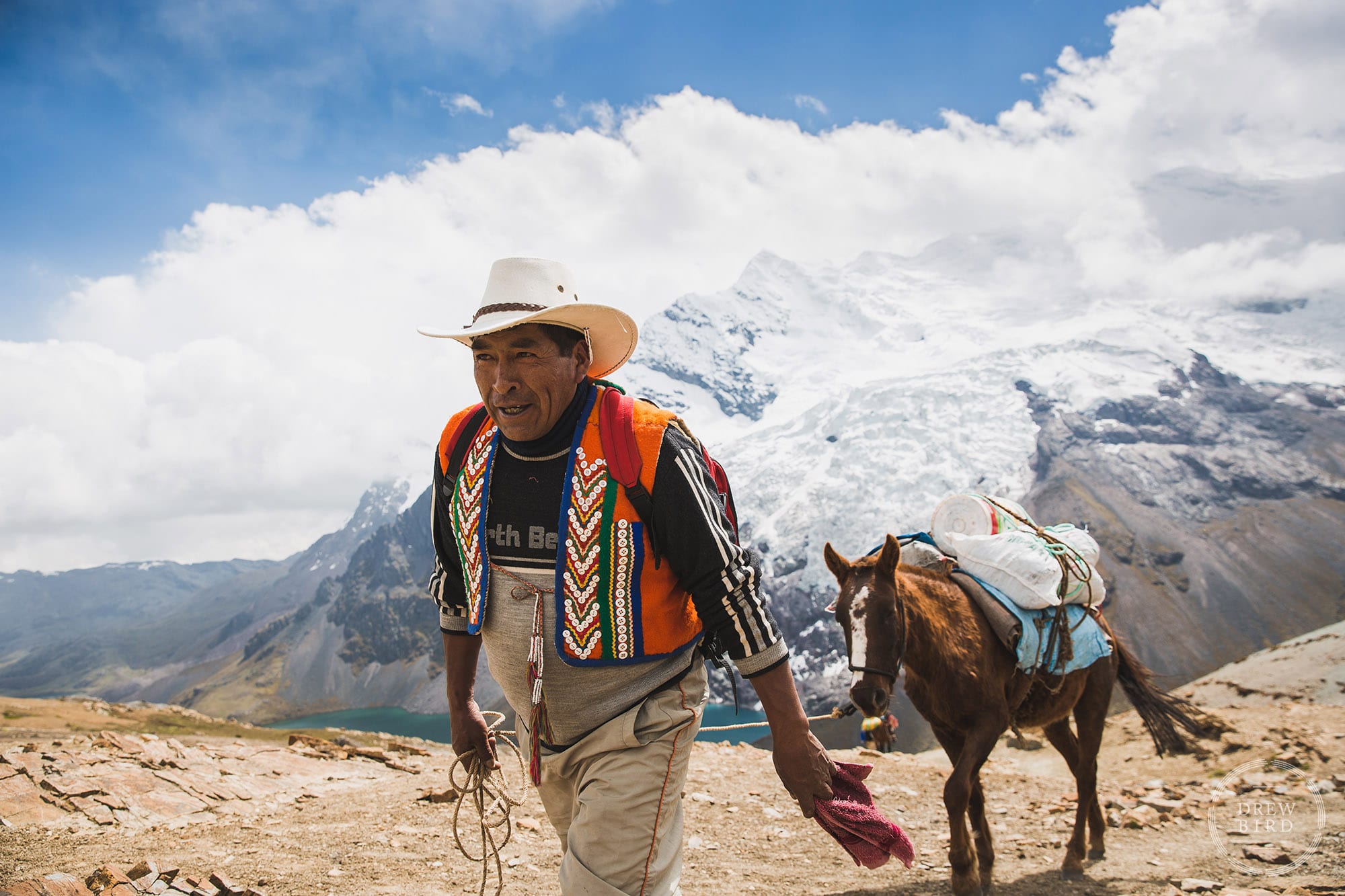
Alpaca Herding and a Tooth Ache
As we crested the ridge line at 14,000ft (4,270m) Ch’aska spotted us immediately. She was tending a herd of alpaca more than a half mile across a vast open valley of rolling hills, grassland, and meandering glacial streams in the highlands surrounding Ausangate.
Our group stopped for a break. Sitting on a round mossy boulder I watched Ch’aska continue to move in our direction, alternating between running and walking, dodging alpaca and leaping over pools of water (photos, below). She was determined. Within a few minutes she was sitting next to me. “Buenos tardes. Todo bien?” I offered. She smiled nervously and looked away. Our guide, Joaquin, explained that she would not understand Spanish. Ch’aska spoke Quechua, an indigenous language descendant from the Incas.
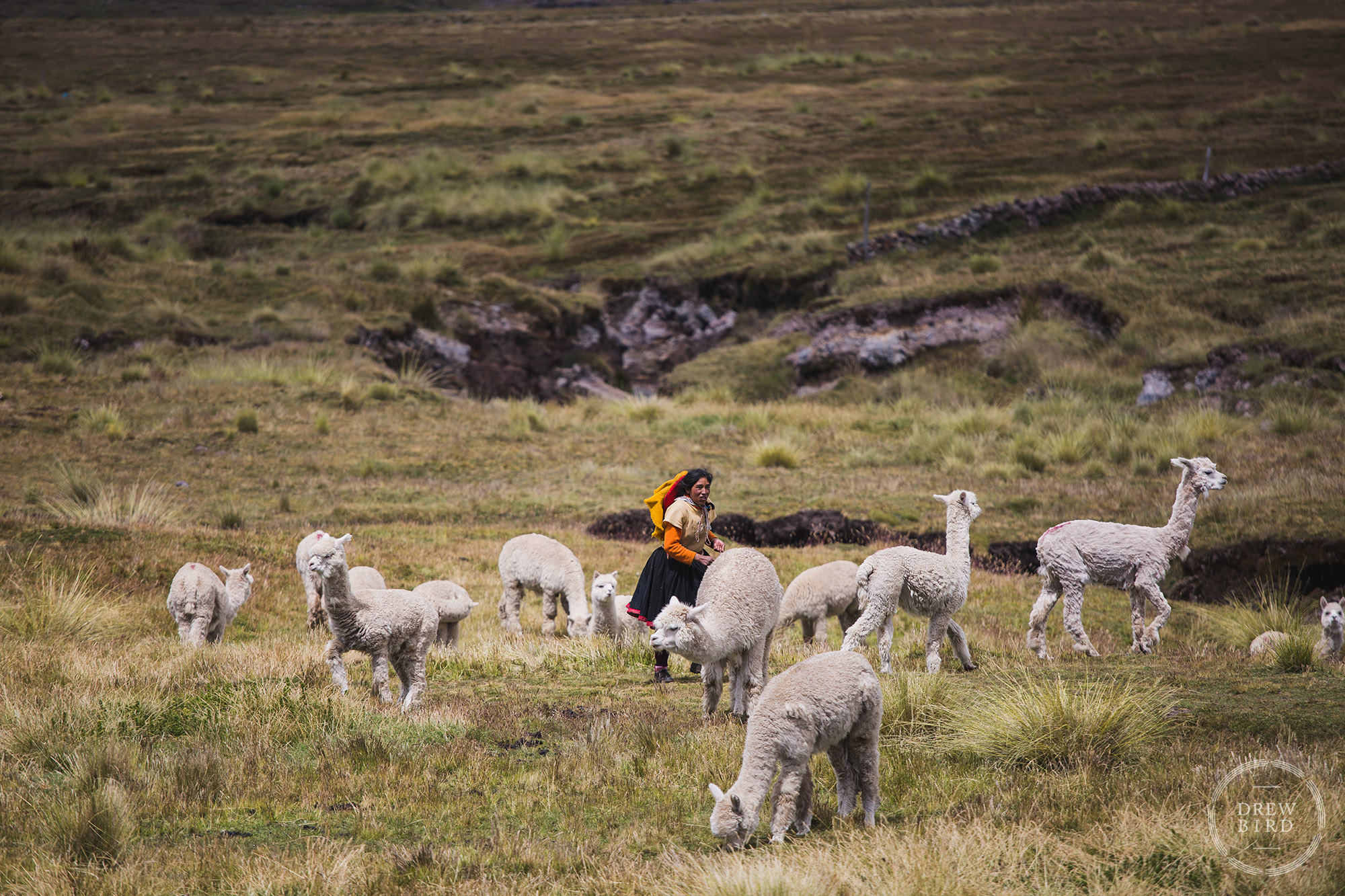
As our group prepared to leave and continue on our trek, Ch’aska made a motion to the side of her jaw line and asked a question. (Joaquin spoke fluent Quechua). She had a terrible, persistent toothache and wondered if we had any medicine (“hampi yachay”) for the pain. We did and gave her a handful of ibuprofen with instructions to take only two pills at a time no more than twice a day. She was overwhelmed with joy and relief. The pills might reduce her pain a little for a short while, but they wouldn’t address the underlying issue. I wondered when, if ever, Ch’aska might have access to a doctor or dentist. It is easy to romanticize the pastoral life here in the wild mountains of Peru. While the landscapes are breathtaking and serene, life here is filled with some incredible hardships and challenges.
The Climate Crisis
Life in the high elevations of Peru has changed dramatically over the last 50 years, mostly due to global heating and the human caused climate emergency. As recently as 1990 most of the terrain we hiked (and shown in these images) was covered year round in snowpack and was not accessible by foot without specialized gear. Since then the Ausangate Glacier (Quelccaya) has reduced in size by more than 40 percent.
The snow and ice pack in these mountains make life possible. The melt serves as a natural water tower for the surrounding region providing drinking water, keeping alpine pastures alive for wildlife and livestock, and providing flowing water for a myriad of economic activity from agriculture to electricity generation. The disappearance of these ice reserves will have a cataclysmic effect on life here. Plants and animals will migrate away or perish, agriculture will not be tenable during much of the year, Cha’aska and other herding communities will be forced to leave in search of water, hydroelectric generation will no longer be viable, and it will impact the millions of people downstream who depend on the flowing waters for sustenance and economic vitality.
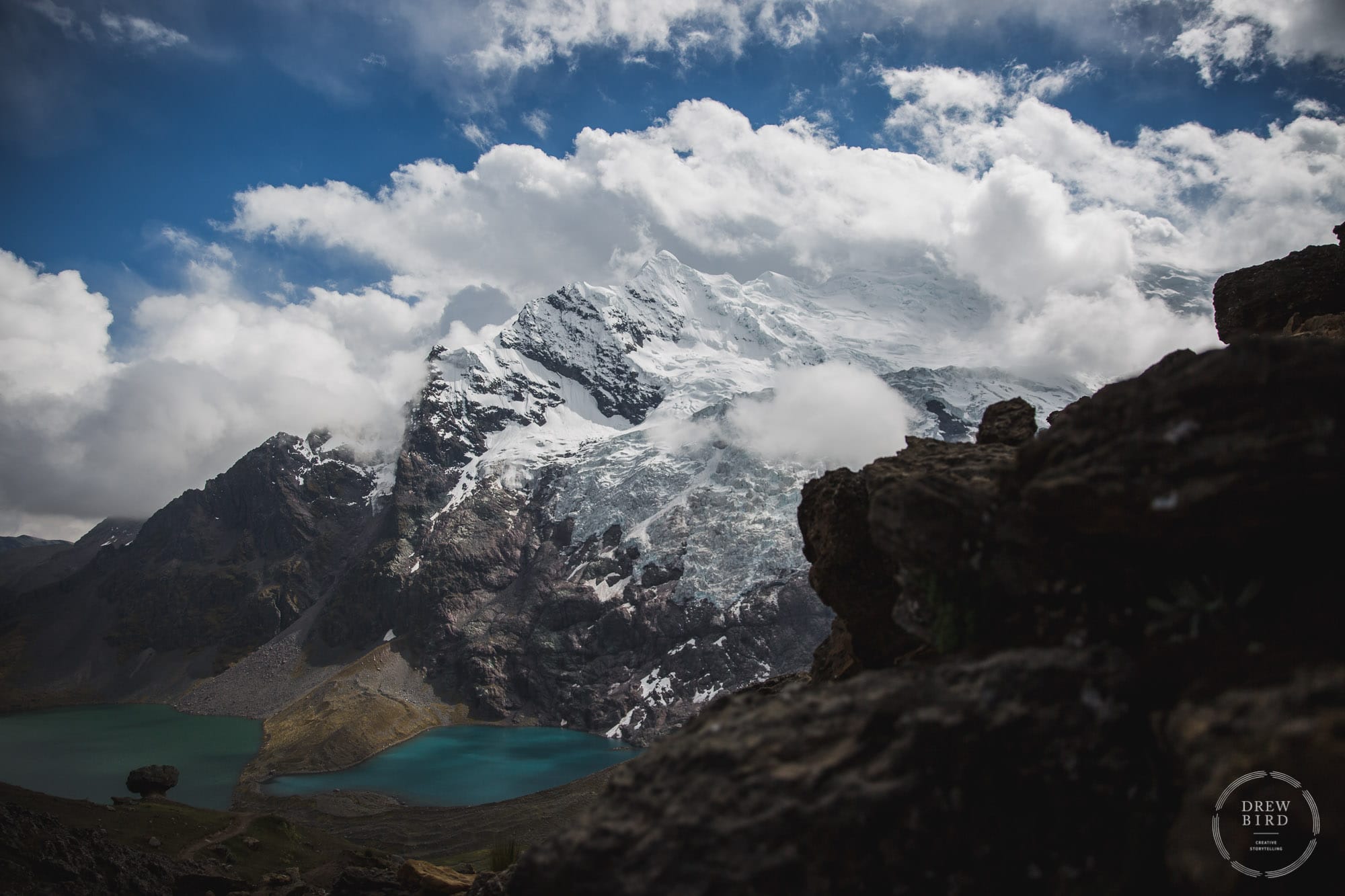
“Drew! These photos are EPIC!!! We love the photo story and can't wait to use some of the images in our marketing.”
– Jeff Russell. Co-founder, Ridge Merino.
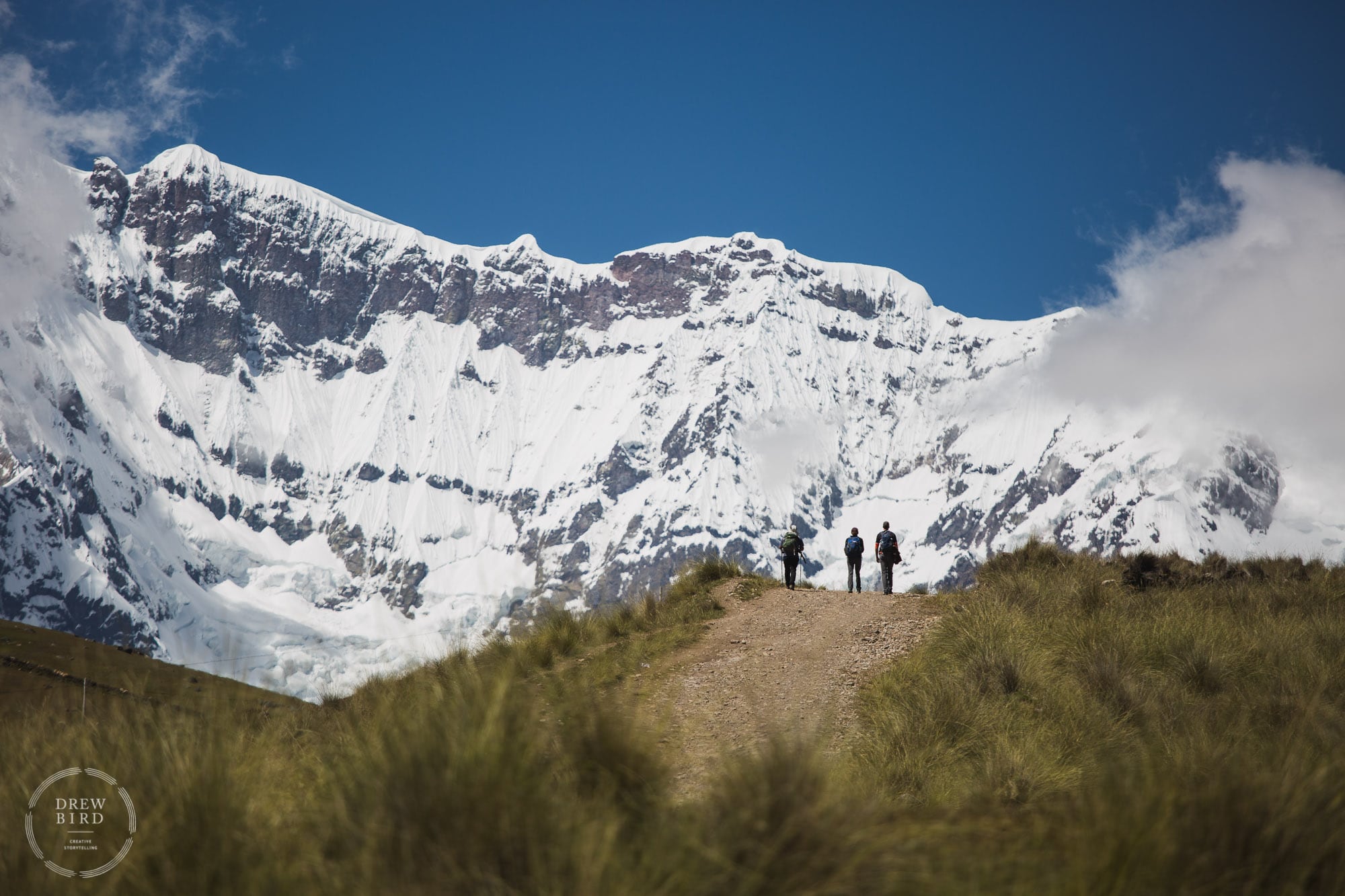
Recently, a vast area around Ausangate (164,000 acres) has been designated as a conservation area. This is most certainly progress towards preserving this wild, sacred place. Though, the problems that threaten Ausangate and its glaciers are global, rooted in modern human civilization’s dependence on fossil fuels. To truly and sustainably protect Ausangate, other natural treasures like it around the world, and the myriad of ecosystem services they provide – it will require nothing short of a revolutionary transition of our entire economic system to clean, renewable energy so that nearly all remaining fossil fuels stay underground and are never burned.
Ridge Merino
I’m deeply grateful for our partnership with Ridge Merino, a fabulous company based in Mammoth, California making top level merino wool clothing for both everyday life and for the wildest of outdoor adventures. The company was founded by Jeff and Susan Russell in 2014. I met Jeff and Susan in the early 2000s via a mutual friend of ours and we’ve been friends ever since. At some point during our planning for this Peruvian glacial adventure, the idea of a partnership was born. It made sense immediately. We trekked above 16,000ft and saw it all: ice, snow, intense winds, rain, mud, and even a little sunshine. Our merino wool gear kept us dry and warm in some pretty gnarly mountain conditions.
A significant number of images from the lifestyle photography story we created on this trip have been used by Ridge Merino in their own marketing, branding, and storytelling. If you’re looking for top quality merino wool clothing from a company dedicated to fair trade, humane treatment of animals, and to ecological sustainability – check out their website here.
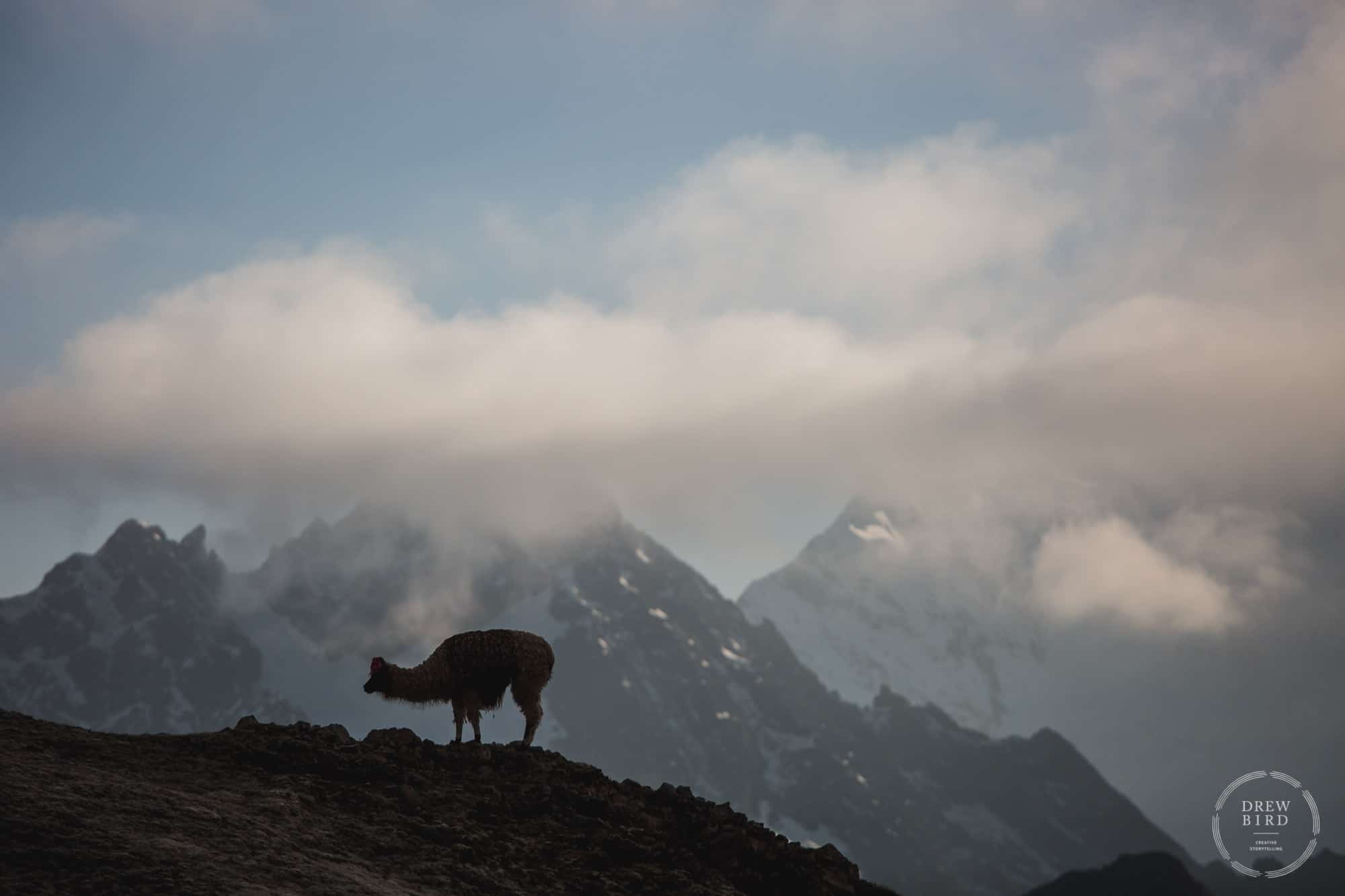
“Ridge Merino's natural and sustainable wool clothing kept us warm and dry in some pretty gnarly mountain conditions.”
Ollantaytambo
In total we spent five days and four nights trekking in the ultra high elevations (highest point was 16,586ft) around the Ausangate glacier in Southeaster Peru. We couldn’t have done it all without our local guides provided by Flashpacker Connect. They shared incredible local knowledge and gave us access to people, places, and communities that simply would have been unattainable on our own. Thanks for showing us the way and welcoming us into your lives.
Following our Ausangate trek, we retreated to the relatively “low” mountain village of Ollantaytambo (9,160ft) to explore some ancient Incan ruins and a town flowing in both history and culture. Photos, below.
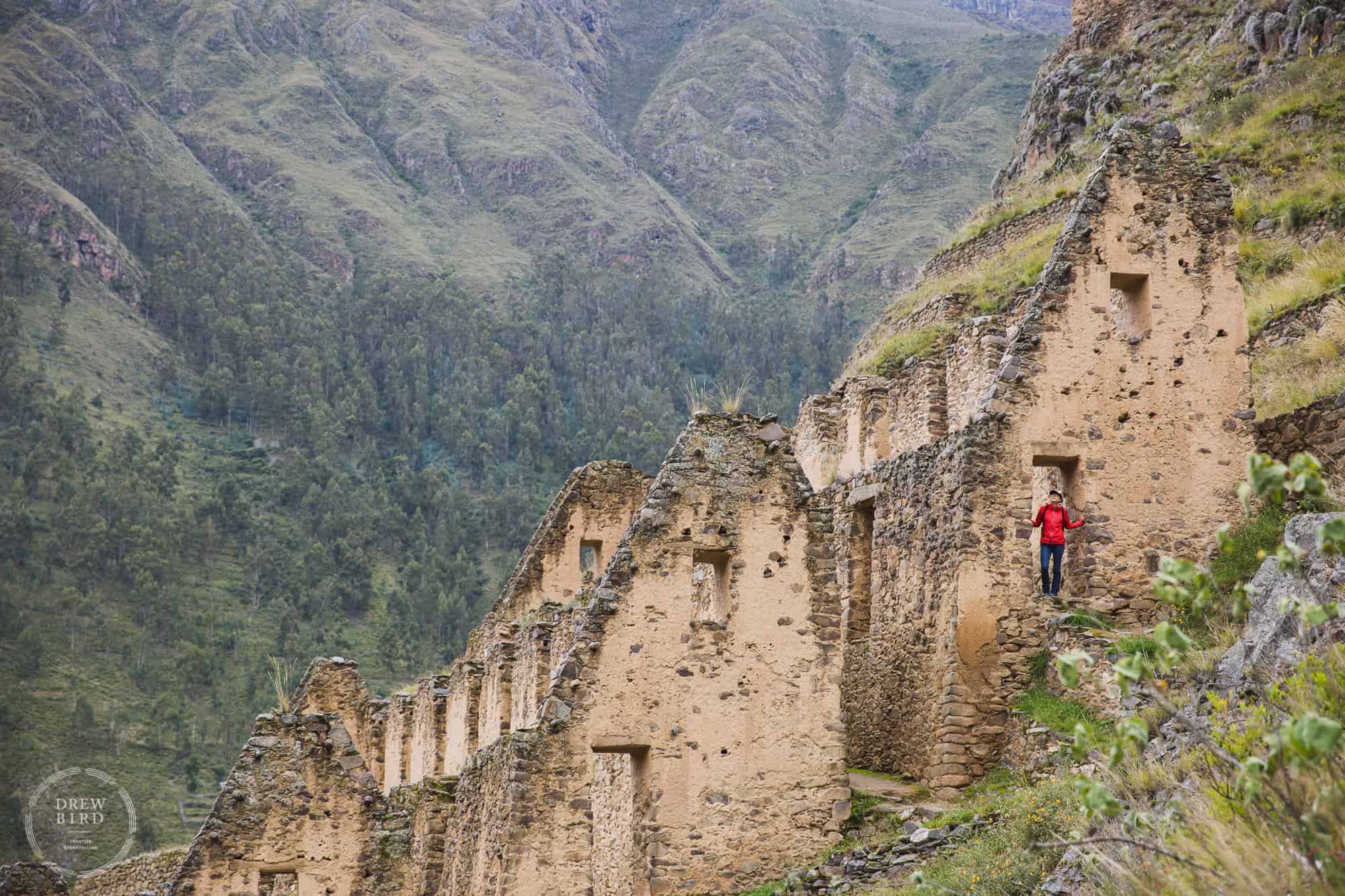
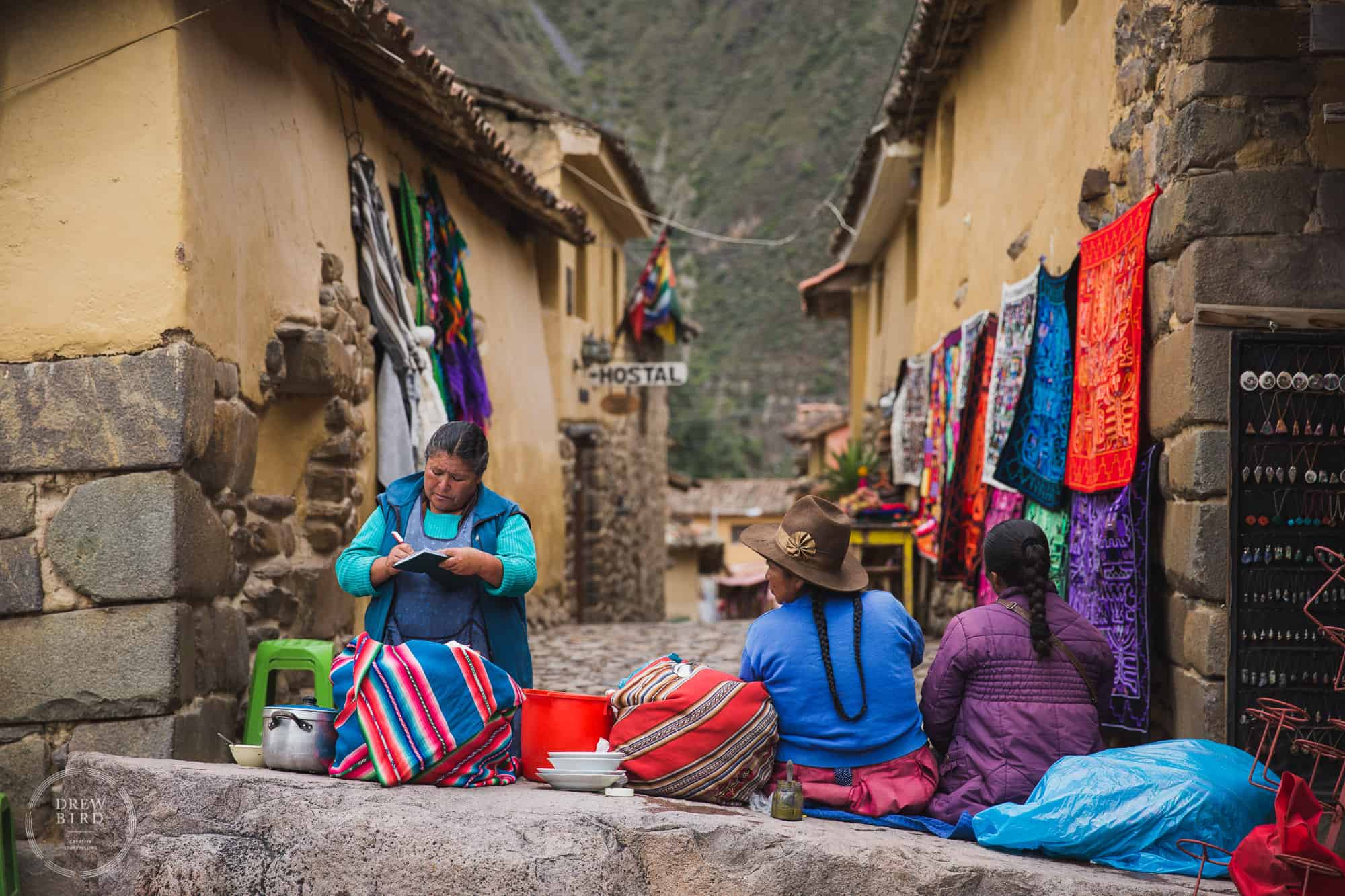
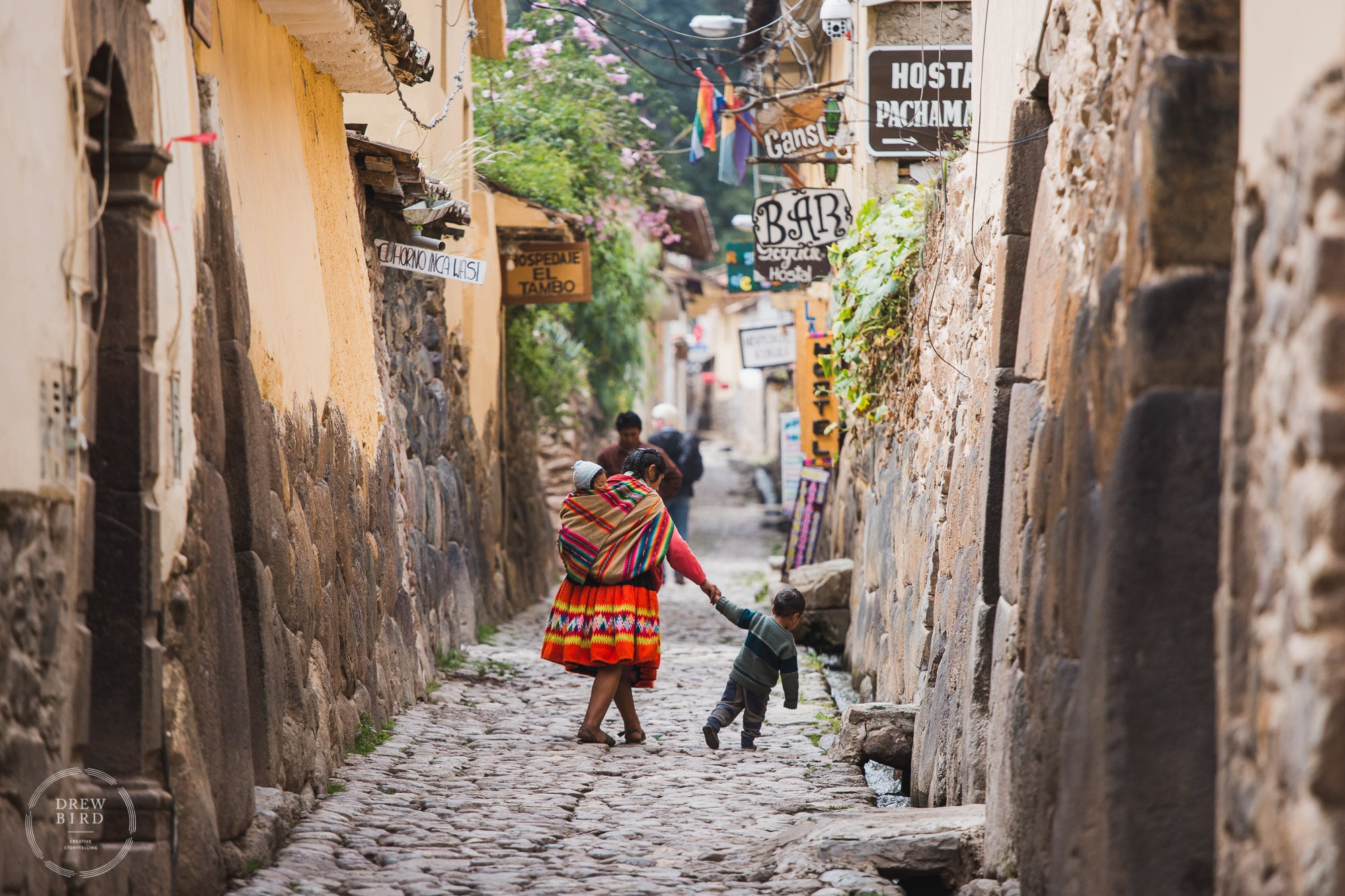
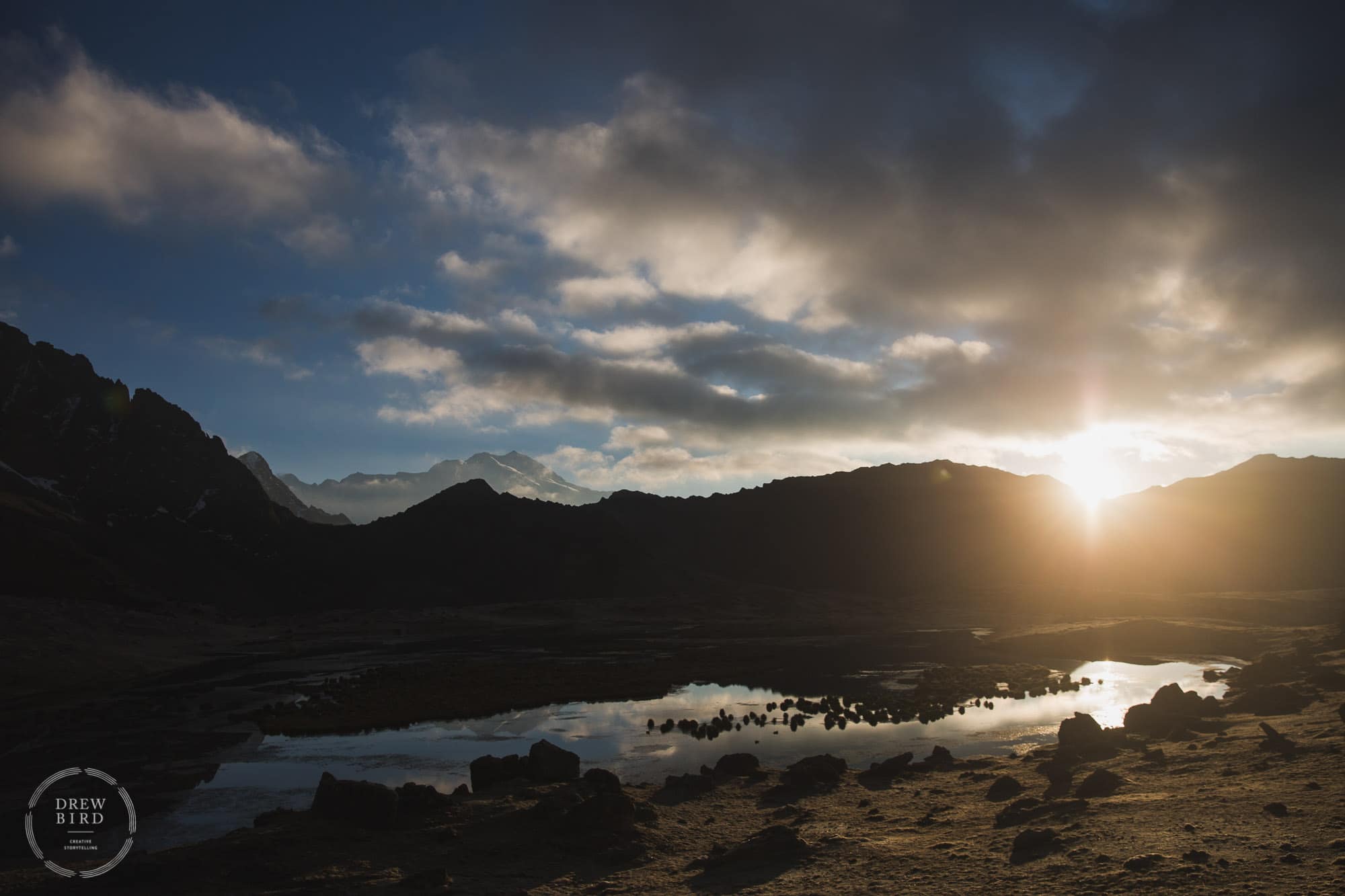
This lifestyle photography story was made in partnership with the outdoor adventure clothing brand, Ridge Merino. Drew Bird is a freelance photographer and storyteller based in Oakland and the San Francisco Bay Area and creating for clients world-wide. Get in touch with Drew.
